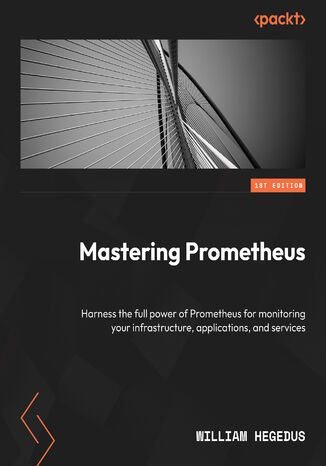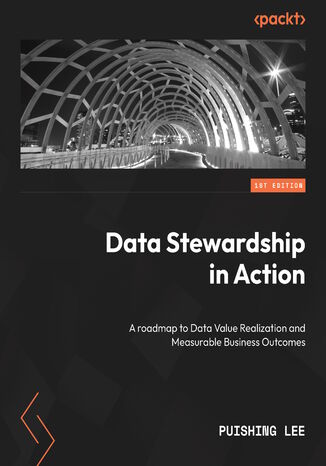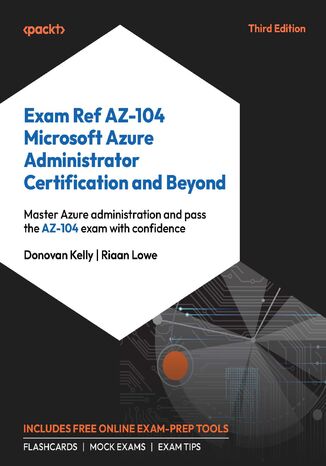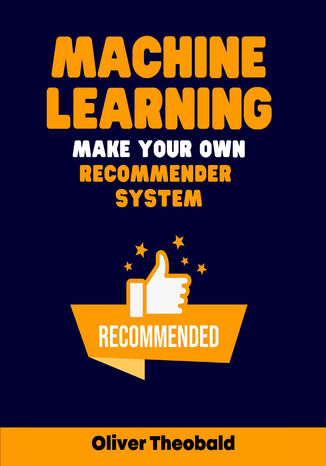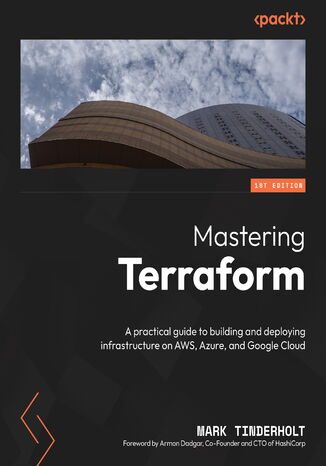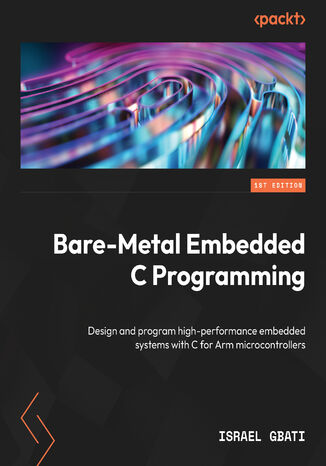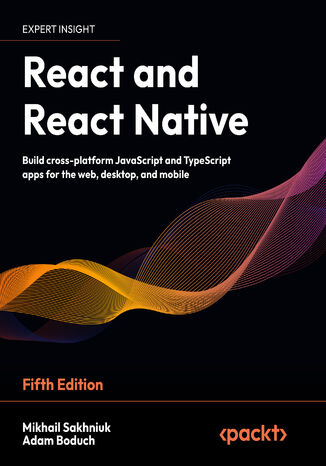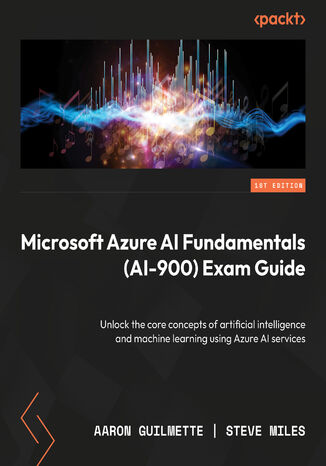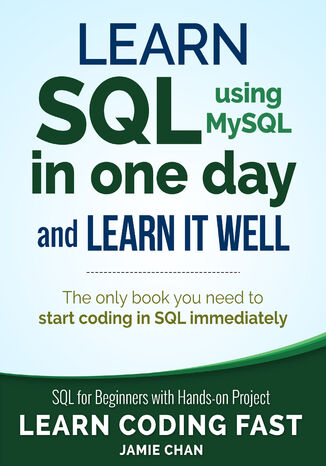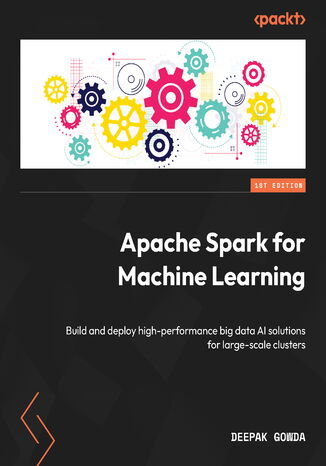Categories
Ebooks
-
Business and economy
- Bitcoin
- Businesswoman
- Coaching
- Controlling
- E-business
- Economy
- Finances
- Stocks and investments
- Personal competence
- Computer in the office
- Communication and negotiation
- Small company
- Marketing
- Motivation
- Multimedia trainings
- Real estate
- Persuasion and NLP
- Taxes
- Social policy
- Guides
- Presentations
- Leadership
- Public Relation
- Reports, analyses
- Secret
- Social Media
- Sales
- Start-up
- Your career
- Management
- Project management
- Human Resources
-
For children
-
For youth
-
Education
-
Encyclopedias, dictionaries
-
E-press
- Architektura i wnętrza
- Health and Safety
- Biznes i Ekonomia
- Home and garden
- E-business
- Ekonomia i finanse
- Esoterecism
- Finances
- Personal finance
- Business
- Photography
- Computer science
- HR & Payroll
- For women
- Computers, Excel
- Accounts
- Culture and literature
- Scientific and academic
- Environmental protection
- Opinion-forming
- Education
- Taxes
- Travelling
- Psychology
- Religion
- Agriculture
- Book and press market
- Transport and Spedition
- Healthand beauty
-
History
-
Computer science
- Office applications
- Data bases
- Bioinformatics
- IT business
- CAD/CAM
- Digital Lifestyle
- DTP
- Electronics
- Digital photography
- Computer graphics
- Games
- Hacking
- Hardware
- IT w ekonomii
- Scientific software package
- School textbooks
- Computer basics
- Programming
- Mobile programming
- Internet servers
- Computer networks
- Start-up
- Operational systems
- Artificial intelligence
- Technology for children
- Webmastering
-
Other
-
Foreign languages
-
Culture and art
-
School reading books
-
Literature
- Antology
- Ballade
- Biographies and autobiographies
- For adults
- Dramas
- Diaries, memoirs, letters
- Epic, epopee
- Essay
- Fantasy and science fiction
- Feuilletons
- Work of fiction
- Humour and satire
- Other
- Classical
- Crime fiction
- Non-fiction
- Fiction
- Mity i legendy
- Nobelists
- Novellas
- Moral
- Okultyzm i magia
- Short stories
- Memoirs
- Travelling
- Narrative poetry
- Poetry
- Politics
- Popular science
- Novel
- Historical novel
- Prose
- Adventure
- Journalism, publicism
- Reportage novels
- Romans i literatura obyczajowa
- Sensational
- Thriller, Horror
- Interviews and memoirs
-
Natural sciences
-
Social sciences
-
School textbooks
-
Popular science and academic
- Archeology
- Bibliotekoznawstwo
- Cinema studies
- Philology
- Polish philology
- Philosophy
- Finanse i bankowość
- Geography
- Economy
- Trade. World economy
- History and archeology
- History of art and architecture
- Cultural studies
- Linguistics
- Literary studies
- Logistics
- Maths
- Medicine
- Humanities
- Pedagogy
- Educational aids
- Popular science
- Other
- Psychology
- Sociology
- Theatre studies
- Theology
- Economic theories and teachings
- Transport i spedycja
- Physical education
- Zarządzanie i marketing
-
Guides
-
Game guides
-
Professional and specialist guides
-
Law
- Health and Safety
- History
- Road Code. Driving license
- Law studies
- Healthcare
- General. Compendium of knowledge
- Academic textbooks
- Other
- Construction and local law
- Civil law
- Financial law
- Economic law
- Economic and trade law
- Criminal law
- Criminal law. Criminal offenses. Criminology
- International law
- International law
- Health care law
- Educational law
- Tax law
- Labor and social security law
- Public, constitutional and administrative law
- Family and Guardianship Code
- agricultural law
- Social law, labour law
- European Union law
- Industry
- Agricultural and environmental
- Dictionaries and encyclopedia
- Public procurement
- Management
-
Tourist guides and travel
- Africa
- Albums
- Southern America
- North and Central America
- Australia, New Zealand, Oceania
- Austria
- Asia
- Balkans
- Middle East
- Bulgary
- China
- Croatia
- The Czech Republic
- Denmark
- Egipt
- Estonia
- Europe
- France
- Mountains
- Greece
- Spain
- Holand
- Iceland
- Lithuania
- Latvia
- Mapy, Plany miast, Atlasy
- Mini travel guides
- Germany
- Norway
- Active travelling
- Poland
- Portugal
- Other
- Przewodniki po hotelach i restauracjach
- Russia
- Romania
- Slovakia
- Slovenia
- Switzerland
- Sweden
- World
- Turkey
- Ukraine
- Hungary
- Great Britain
- Italy
-
Psychology
- Philosophy of life
- Kompetencje psychospołeczne
- Interpersonal communication
- Mindfulness
- General
- Persuasion and NLP
- Academic psychology
- Psychology of soul and mind
- Work psychology
- Relacje i związki
- Parenting and children psychology
- Problem solving
- Intellectual growth
- Secret
- Sexapeal
- Seduction
- Appearance and image
- Philosophy of life
-
Religion
-
Sport, fitness, diets
-
Technology and mechanics
Audiobooks
-
Business and economy
- Bitcoin
- Businesswoman
- Coaching
- Controlling
- E-business
- Economy
- Finances
- Stocks and investments
- Personal competence
- Communication and negotiation
- Small company
- Marketing
- Motivation
- Real estate
- Persuasion and NLP
- Taxes
- Social policy
- Guides
- Presentations
- Leadership
- Public Relation
- Secret
- Social Media
- Sales
- Start-up
- Your career
- Management
- Project management
- Human Resources
-
For children
-
For youth
-
Education
-
Encyclopedias, dictionaries
-
E-press
-
History
-
Computer science
-
Other
-
Foreign languages
-
Culture and art
-
School reading books
-
Literature
- Antology
- Ballade
- Biographies and autobiographies
- For adults
- Dramas
- Diaries, memoirs, letters
- Epic, epopee
- Essay
- Fantasy and science fiction
- Feuilletons
- Work of fiction
- Humour and satire
- Other
- Classical
- Crime fiction
- Non-fiction
- Fiction
- Mity i legendy
- Nobelists
- Novellas
- Moral
- Okultyzm i magia
- Short stories
- Memoirs
- Travelling
- Poetry
- Politics
- Popular science
- Novel
- Historical novel
- Prose
- Adventure
- Journalism, publicism
- Reportage novels
- Romans i literatura obyczajowa
- Sensational
- Thriller, Horror
- Interviews and memoirs
-
Natural sciences
-
Social sciences
-
Popular science and academic
-
Guides
-
Professional and specialist guides
-
Law
-
Tourist guides and travel
-
Psychology
- Philosophy of life
- Interpersonal communication
- Mindfulness
- General
- Persuasion and NLP
- Academic psychology
- Psychology of soul and mind
- Work psychology
- Relacje i związki
- Parenting and children psychology
- Problem solving
- Intellectual growth
- Secret
- Sexapeal
- Seduction
- Appearance and image
- Philosophy of life
-
Religion
-
Sport, fitness, diets
-
Technology and mechanics
Videocourses
-
Data bases
-
Big Data
-
Biznes, ekonomia i marketing
-
Cybersecurity
-
Data Science
-
DevOps
-
For children
-
Electronics
-
Graphics/Video/CAX
-
Games
-
Microsoft Office
-
Development tools
-
Programming
-
Personal growth
-
Computer networks
-
Operational systems
-
Software testing
-
Mobile devices
-
UX/UI
-
Web development
-
Management
Podcasts
Adversarial attacks trick AI systems with malicious data, creating new security risks by exploiting how AI learns. This challenges cybersecurity as it forces us to defend against a whole new kind of threat. This book demystifies adversarial attacks and equips you with the skills to secure AI technologies, moving beyond research hype or business-as-usual activities. Learn how to defend AI and LLM systems against manipulation and intrusion through adversarial attacks such as poisoning, trojan horses, and model extraction, leveraging DevSecOps, MLOps, and other methods to secure systems.This strategy-based book is a comprehensive guide to AI security, combining structured frameworks with practical examples to help you identify and counter adversarial attacks. Part 1 introduces the foundations of AI and adversarial attacks. Parts 2, 3, and 4 cover key attack types, showing how each is performed and how to defend against them. Part 5 presents secure-by-design AI strategies, including threat modeling, MLSecOps, and guidance aligned with OWASP and NIST. The book concludes with a blueprint for maturing enterprise AI security based on NIST pillars, addressing ethics and safety under Trustworthy AI.By the end of this book, you’ll be able to develop, deploy, and secure AI systems against the threat of adversarial attacks effectively.
Mastering Prometheus. Gain expert tips to monitoring your infrastructure, applications, and services
With an increased focus on observability and reliability, establishing a scalable and reliable monitoring environment is more important than ever. Over the last decade, Prometheus has emerged as the leading open-source, time-series based monitoring software catering to this demand. This book is your guide to scaling, operating, and extending Prometheus from small on-premises workloads to multi-cloud globally distributed workloads and everything in between.Starting with an introduction to Prometheus and its role in observability, the book provides a walkthrough of its deployment. You’ll explore Prometheus’s query language and TSDB data model, followed by dynamic service discovery for monitoring targets and refining alerting through custom templates and formatting. The book then demonstrates horizontal scaling of Prometheus via sharding and federation, while equipping you with debugging techniques and strategies to fine-tune data ingestion. Advancing through the chapters, you’ll manage Prometheus at scale through CI validations and templating with Jsonnet, and integrate Prometheus with other projects such as OpenTelemetry, Thanos, VictoriaMetrics, and Mimir.By the end of this book, you’ll have practical knowledge of Prometheus and its ecosystem, which will help you discern when, why, and how to scale it to meet your ever-growing needs.
Alex Rios, a seasoned Go developer and active community builder, shares his 15 years of expertise in designing large-scale systems through this book. It masterfully cuts through complexity, enabling you to build efficient and secure applications with Go's streamlined syntax and powerful concurrency features.In this book, you’ll learn how Go, unlike traditional system programming languages (C/C++), lets you focus on the problem by prioritizing readability and elevating developer experience with features like automatic garbage collection and built-in concurrency primitives, which remove the burden of low-level memory management and intricate synchronization.Through hands-on projects, you'll master core concepts like file I/O, process management, and inter-process communication to automate tasks and interact with your system efficiently. You'll delve into network programming in Go, equipping yourself with the skills to build robust, distributed applications. This book goes beyond the basics by exploring modern practices like logging and tracing for comprehensive application monitoring, and advance to distributed system design using Go to prepare you to tackle complex architectures.By the end of this book, you'll emerge as a confident Go system programmer, ready to craft high-performance, secure applications for the modern world.
Data Stewardship in Action. A roadmap to data value realization and measurable business outcomes
In the competitive data-centric world, mastering data stewardship is not just a requirement—it's the key to organizational success. Unlock strategic excellence with Data Stewardship in Action, your guide to exploring the intricacies of data stewardship and its implementation for maximum efficiency.From business strategy to data strategy, and then to data stewardship, this book shows you how to strategically deploy your workforce, processes, and technology for efficient data processing. You’ll gain mastery over the fundamentals of data stewardship, from understanding the different roles and responsibilities to implementing best practices for data governance. You’ll elevate your data management skills by exploring the technologies and tools for effective data handling. As you progress through the chapters, you’ll realize that this book not only helps you develop the foundational skills to become a successful data steward but also introduces innovative approaches, including leveraging AI and GPT, for enhanced data stewardship.By the end of this book, you’ll be able to build a robust data governance framework by developing policies and procedures, establishing a dedicated data governance team, and creating a data governance roadmap that ensures your organization thrives in the dynamic landscape of data management.
Take the first step toward excellence in Azure management and earning your Microsoft certification with this hands-on guide!This third edition of Exam Ref AZ-104 Microsoft Azure Administrator Certification and Beyond offers comprehensive insights and step-by-step instructions that follow the latest AZ-104 exam objectives. You’ll work your way from foundational topics such as Azure identity management and governance to essential skills such as deploying and managing storage solutions, configuring virtual networks, and monitoring Azure resources. Each chapter includes practice questions to reinforce your understanding and enhance your practical skills. The book also provides you with access to online mock exams, interactive flashcards, and expert exam tips, helping you assess your readiness and boost your confidence before the exam.By the end of this book, you won’t just be prepared to pass the AZ-104 exam – you’ll also have the expertise needed to efficiently manage Azure environments in real-world scenarios.
The Arduino IoT Cloud offers a variety of features for building modern IoT solutions while reducing time and costs for prototyping and deployment. This book is a step-by-step guide, helping you master the powerful Arduino IoT Cloud ecosystem. This book begins by introducing you to the IoT landscape including its architecture, communication technologies, and protocols and then to the capabilities of the Arduino IoT Cloud platform and the Cloud Editor. With practical projects, such as monitoring air quality, building a portable asset tracker, and creating a remote alarm system using the LoRaWAN specification, you'll learn how to implement real-world IoT applications. Next, you'll explore communication between IoT devices and cloud platforms as well as the implementation of the Arduino IoT Cloud SDK and JavaScript for advanced customization. You'll also find out how to program IoT nodes, analyze the surrounding environment data, and visualize it on dashboards. Additionally, you’ll get to grips with advanced features such as task scheduling, synchronization, remote over-the-air updates for IoT nodes, and scripting with CCLI, through hands-on examples.By the end of this book, you’ll have learned how to work with the Arduino IoT Cloud platform and related hardware devices and will be able to develop industry-specific and cost-effective IoT solutions, such as smart homes and smart agriculture.
With an introductory overview, the course prepares you for a deep dive into the practical application of Scikit-Learn and the datasets that bring theories to life. From the basics of machine learning to the intricate details of setting up a sandbox environment, this course covers the essential groundwork for any aspiring data scientist.The course focuses on developing your skills in working with data, implementing data reduction techniques, and understanding the intricacies of item-based and user-based collaborative filtering, along with content-based filtering. These core methodologies are crucial for creating accurate and efficient recommender systems that cater to the unique preferences of users. Practical examples and evaluations further solidify your learning, making complex concepts accessible and manageable.The course wraps up by addressing the critical topics of privacy, ethics in machine learning, and the exciting future of recommender systems. This holistic approach ensures that you not only gain technical proficiency but also consider the broader implications of your work in this field. With a final look at further resources, your journey into machine learning and recommender systems is just beginning, armed with the knowledge and tools to explore new horizons.
As cloud technology and automation evolve, managing infrastructure as code, integrating security, and handling microservices complexity have become critical challenges. This book takes a hands-on approach to teaching Terraform, helping you build efficient cloud infrastructure using real-world scenarios and best practices.It begins with an introduction to Terraform's architecture, covering its command-line interface and HashiCorp Configuration Language. You’ll learn best practices, architectural patterns, and how to implement Terraform across virtual machines, Docker/Kubernetes, serverless environments, and cloud platforms like AWS, Azure, and GCP. The book also covers integrating Terraform into CI/CD pipelines with other technologies to automate infrastructure provisioning and management.Additional chapters focus on security, monitoring, troubleshooting, and cost optimization. You'll also gain insights into preparing for the Terraform Associate certification. By the end, you’ll have the skills to build, automate, and manage cloud infrastructure effectively.
Elevate your practical C# and .NET skills to the next level with this new edition of Apps and Services with .NET 8.With chapters that put a variety of technologies into practice, including Web API, gRPC, GraphQL, and SignalR, this book will give you a broader scope of knowledge than other books that often focus on only a handful of .NET technologies. You’ll dive into the new unified model for Blazor Full Stack and leverage .NET MAUI to develop mobile and desktop apps.This new edition introduces the latest enhancements, including the seamless implementation of web services with ADO.NET SqlClient's native Ahead-of-Time (AOT) support. Popular library coverage now includes Humanizer and Noda Time. There’s also a brand-new chapter that delves into service architecture, caching, queuing, and robust background services.By the end of this book, you’ll have a wide range of best practices and deep insights under your belt to help you build rich apps and efficient services.
Effective .NET Memory Management. Build memory-efficient cross-platform applications using .NET Core
In today’s software development landscape, efficient memory management is crucial for ensuring application performance and scalability. Effective .NET Memory Management addresses this need by explaining the intricacies of memory utilization within .NET Core apps, from fundamental concepts to advanced optimization techniques. Starting with an overview of memory management basics, you’ll quickly go through .NET’s garbage collection system. You’ll grasp the mechanics of memory allocation and gain insights into the distinctions between stack and heap memory and the nuances of value types and reference types. Building on this foundation, this book will help you apply practical strategies to address real-world app demands, spanning profiling memory usage, spotting memory leaks, and diagnosing performance bottlenecks, through clear explanations and hands-on examples. This book goes beyond theory, detailing actionable techniques to optimize data structures, minimize memory fragmentation, and streamline memory access in scenarios involving multithreading and asynchronous programming for creating responsive and resource-efficient apps that can scale without sacrificing performance. By the end of this book, you’ll have gained the knowledge to write clean, efficient code that maximizes memory usage and boosts app performance.
Israel Gbati, Georgios Papanikolaou
Bare-Metal Embedded C Programming takes you on an unparalleled journey to equip you with the skills and knowledge to excel in the world of embedded systems. The author, with over a decade of hands-on experience in engineering, takes a unique, practical approach to teach you how to decode microcontroller datasheets so that you’re able to extract vital information for precise firmware development. Register manipulation will become second nature to you as you learn to craft optimized code from scratch.The book provides in-depth insights into the hardware intricacies of microcontrollers. You'll navigate user manuals and documentation with ease, ensuring a profound understanding of the underlying technology. The true uniqueness of this book lies in its commitment to fostering independent expertise. Instead of simply copy pasting, you'll develop the capability to create firmware with confidence, paving the way for professional-grade mastery.By the end of this book, you'll have honed your skills in reading datasheets, performing register manipulations, and crafting optimized code, as well as gained the confidence needed to navigate hardware intricacies and write optimized firmware independently, making you a proficient and self-reliant embedded systems developer.
Begin with an introduction to Kubernetes, understanding its importance and architecture. These foundational chapters will set the stage for your exploration into Kubernetes' capabilities. As you progress, you'll learn how to set up Kubernetes and containerize an application, equipping you with practical skills for real-world application management.The course continues with a focus on running applications on Kubernetes, where you will delve into self-healing mechanisms, scaling, and performing rolling updates. Each chapter builds on the last, ensuring a seamless learning experience that integrates theoretical knowledge with hands-on practice. You'll understand how Kubernetes maintains application health and performance, providing a robust environment for modern applications.Concluding with advanced operational techniques and future steps, the course prepares you to leverage Kubernetes for continuous development and deployment. Whether you're scaling applications to meet demand or ensuring seamless updates with minimal downtime, you'll be equipped with the skills necessary for efficient and effective Kubernetes management. This course is your gateway to becoming proficient in one of the most essential tools in the DevOps toolkit.
Welcome to your big-picture guide to the React ecosystem.If you’re new to React and looking to become a professional React developer, this book is for you. This updated fifth edition reflects the current state of React, including React framework coverage as well as TypeScript.Part 1 introduces you to React. You’ll discover JSX syntax, hooks, functional components, and event handling, learn techniques to fetch data from a server, and tackle the tricky problem of state management. Once you’re comfortable with writing React in JavaScript, you’ll pick up TypeScript development in later chapters.Part 2 transitions you into React Native for mobile development. React Native goes hand-in-hand with React. With your React knowledge behind you, you’ll appreciate where and how React Native differs as you write shared components for Android and iOS apps. You’ll learn how to build responsive layouts, use animations, and implement geolocation.By the end of this book, you’ll have a big-picture view of React and React Native and be able to build applications with both.
Aaron Guilmette, Steve Miles, Peter De Tender
The AI-900 exam helps you take your first step into an AI-shaped future. Regardless of your technical background, this book will help you test your understanding of the key AI-related topics and tools used to develop AI solutions in Azure cloud.This exam guide focuses on AI workloads, including natural language processing (NLP) and large language models (LLMs). You’ll explore Microsoft’s responsible AI principles like safety and accountability. Then, you’ll cover the basics of machine learning (ML), including classification and deep learning, and learn how to use training and validation datasets with Azure ML. Using Azure AI Vision, face detection, and Video Indexer services, you’ll get up to speed with computer vision-related topics like image classification, object detection, and facial detection. Later chapters cover NLP features such as key phrase extraction, sentiment analysis, and speech processing using Azure AI Language, speech, and translator services. The book also guides you through identifying GenAI models and leveraging Azure OpenAI Service for content generation. At the end of each chapter, you’ll find chapter review questions with answers, provided as an online resource.By the end of this exam guide, you’ll be able to work with AI solutions in Azure and pass the AI-900 exam using the online exam prep resources.
Learn SQL using MySQL in One Day and Learn It Well. SQL for beginners with Hands-on Project
Learn SQL (using MySQL) in One Day and Learn It Well is the ultimate guide for beginners aiming to grasp the complexities of SQL through hands-on learning. Starting with an introduction to the essence of databases, this book methodically advances through defining and manipulating tables, mastering data insertion, updates, deletions, and executing sophisticated data selection techniques across its comprehensive chapters. It further explores the creation and utility of views, the implementation of triggers to automate database responses, and the intricacies of variables, stored routines, control flow tools, and cursors, culminating in a capstone project that brings all concepts together.Culminating in a project , this book offers a unique opportunity to apply all the learned concepts in a practical, real-world scenario, reinforcing the skills and knowledge acquired throughout the chapters. The appendices provide additional resources including table definitions for practical exercises modeled on real-world scenarios.Embark on a learning journey that transitions you from novice to proficient in managing and querying databases with MySQL, empowering you with the skills to tackle real-world data challenges.
In the world of big data, efficiently processing and analyzing massive datasets for machine learning can be a daunting task. Written by Deepak Gowda, a data scientist with over a decade of experience and 30+ patents, this book provides a hands-on guide to mastering Spark’s capabilities for efficient data processing, model building, and optimization. With Deepak’s expertise across industries such as supply chain, cybersecurity, and data center infrastructure, he makes complex concepts easy to follow through detailed recipes.This book takes you through core machine learning concepts, highlighting the advantages of Spark for big data analytics. It covers practical data preprocessing techniques, including feature extraction and transformation, supervised learning methods with detailed chapters on regression and classification, and unsupervised learning through clustering and recommendation systems. You’ll also learn to identify frequent patterns in data and discover effective strategies to deploy and optimize your machine learning models. Each chapter features practical coding examples and real-world applications to equip you with the knowledge and skills needed to tackle complex machine learning tasks.By the end of this book, you’ll be ready to handle big data and create advanced machine learning models with Apache Spark.


